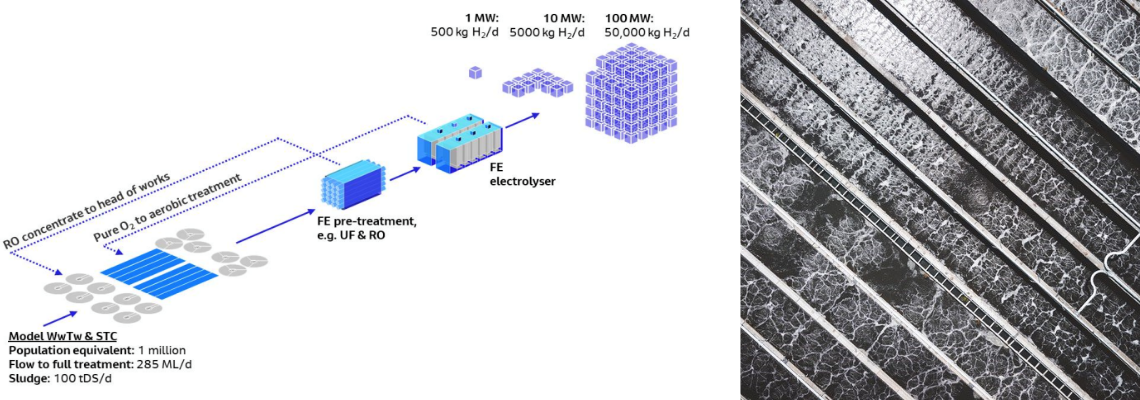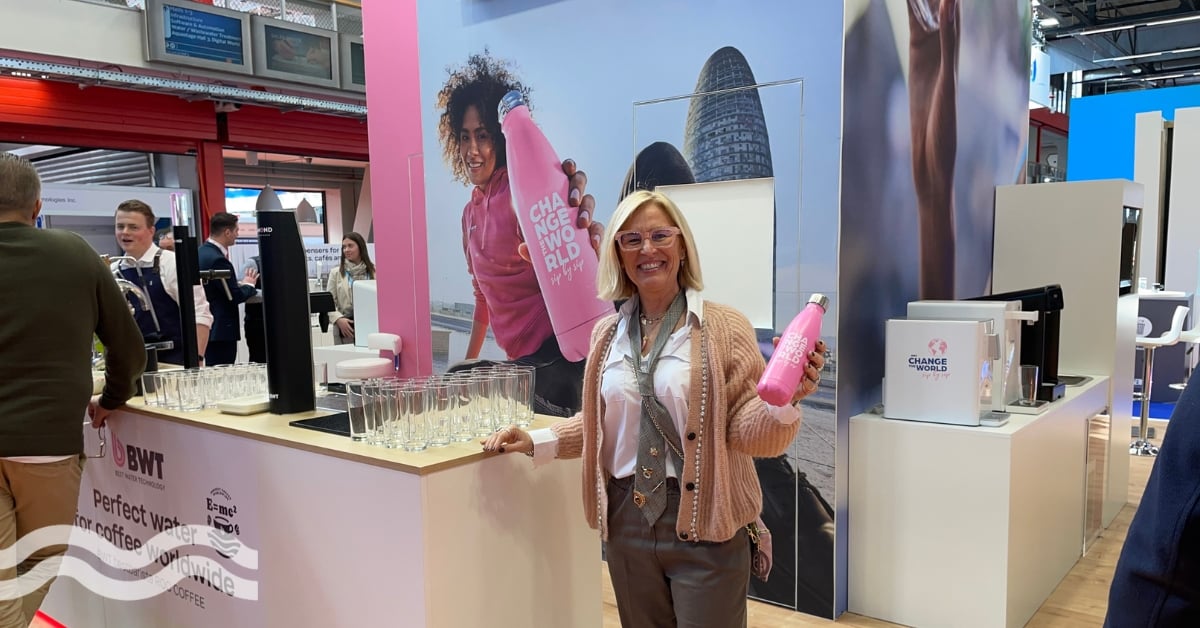Unlocking the final effluent pathway to green hydrogen

In the UK, hydrogen is seen as the solution to achieving a low carbon economy by 2030. What role could wastewater treatment plants play? A new whitepaper from Jacobs looks at how the final effluent pathway could be the key to unlocking green hydrogen.
Creating green hydrogen from the water sector
The final effluent (FE) pathway is being seen as a potential way to help unlock green hydrogen production from the water sector.
Through the FE pathway route, it would help to create hydrogen by using electrolysis of the embedded water in the treated effluents leaving facilities.
That’s according to a new whitepaper from engineering consultancy, Jacobs.
Called ‘The UK Water Sector and Hydrogen – The Final Effluent (FE) Pathway’, the report identifies pathways for hydrogen production at wastewater treatment works (WwTW) and sludge treatment centres (STCs) and explores the synergies and trade-offs with business-as-usual treatment.
Last August, the UK Government announced its plans to achieve 5GW of low carbon hydrogen production capacity by 2030
“The UK Government announced its plans to achieve 5GW of low carbon hydrogen production capacity by 2030.”
As well as hydrogen, the electrolysis of FE water would also generate a pure oxygen co-product that can be used to enhance aerobic biological treatment.
The final effluent pathway: potential challenges
Despite the multiple listed benefits, the FE pathway could also have a number of influences on the wastewater treatment process.
One potential challenge is returning organic, inorganic and nutrient loads in the reverse osmosis concentrate from FE pre-treatment, which could exert additional demand on the WwTW.
The FE pathway could also introduce a significant additional energy requirement and disrupt the balance of carbon emissions.
However, recovering the pure oxygen co-product generated during the electrolysis of water and using it within aerobic treatment could help the two processes work in sync.
Using oxygen-enriched air can intensify aerobic treatment but is often cost-prohibitive. By generating pure oxygen as a co-product alongside hydrogen, the FE pathway could use hydrogen production to leverage enhanced treatment.
Impact on surface water environments
Jacob's whitepaper expresses the concerns around green hydrogen production and the consumption of water resources.
Drawing reference to the South of England as an area of high water scarcity where water companies are currently looking at tackling unsustainable water abstraction through effluent reuse schemes.
“While the FE pathway avoids direct use of potable water sources, significantly reduced flows returned from WwTW could damage surface water environments.”
While the FE pathway avoids direct use of potable water sources, significantly reduced flows returned from WwTW could impact surface water environments.
If hydrogen produced by the FE pathway is to be considered green it must be produced using verifiably renewable electricity, which is what Anglian Water's triple carbon reduction is aiming to achieve.
Triple carbon reduction
The ‘Triple Carbon Reduction’ project, led by Anglian Water with partners including Jacobs and OxyMem, will demonstrate the FE pathway concept for the first time.
“Our project creates an elegant solution to eliminate part of the greenhouse gas emissions associated with wastewater treatment.”
Anglian Water received £3.5 million from Ofwat's Breakthrough Challenge to develop its triple carbon reduction solution. This includes to produce a reduction in greenhouse gas emissions and electricity use in used water treatment to provide a new renewable energy source through green hydrogen.
Adam Brookes, manager of innovation discovery at Anglian Water, said: “By collaborating with academia, businesses and other water companies, our project creates an elegant solution to eliminate part of the greenhouse gas emissions associated with wastewater treatment and position the sector within the developing hydrogen landscape, in line with the newly launched UK Government Hydrogen strategy.”
The FE pathway presents the water sector with a potential solution to achieving the hydrogen production targets outlined by the UK Government.


